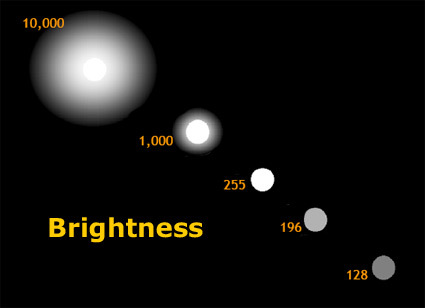ATI Enters The X1000 Promised Land
Image Quality Improvements
High Dynamic Range With Anti-Aliasing
The processor is simply impressive but the changes are not only limited to the hardware design. The card also now supports HDR with AA. Let's briefly look at how hardware renders the HDR effect. Dynamic Range is the ratio between the lowest (darkest) value in a frame and the highest (brightest). The greater the number of bits in the data set, the greater the dynamic range.
Examples:
- 8-bit integer - 256:1
- 10-bit integer - 1,024:1
- 16-bit integer - 65,536:1
- 16-bit floating point - 2.2 trillion:1
Most monitors can only handle 8-bit color depths. So to make up for this deficiency, the graphics card adds effects like glow effects around light sources (light blooms) and other lens flare effects to fool the viewer that there is a higher brightness that what the monitor actually is displaying. High Dynamic Range is possible where the values are greater than 8-bits per color.
ATI offers HDR with AA in one of three modes: Multisampling AA (MSAA), Temporal AA and ATI's new feature, Adaptive AA (AAA), which is detailed below. ATI states that the X1000 series can handle a wide array of HDR formats with the fastest speed being 32-bit (Integer 10), the maximum value of 64-bit (Floating Point 16 and Integer 10) and other custom combinations.
Get Tom's Hardware's best news and in-depth reviews, straight to your inbox.
Current page: Image Quality Improvements
Prev Page Memory Mastery Next Page High Quality AF And Adaptive Anti-Aliasing (AAA)